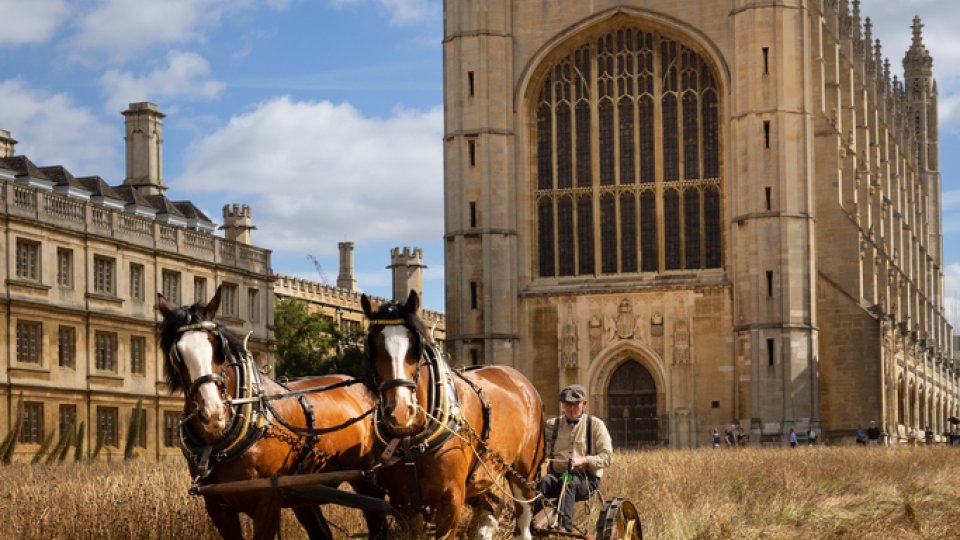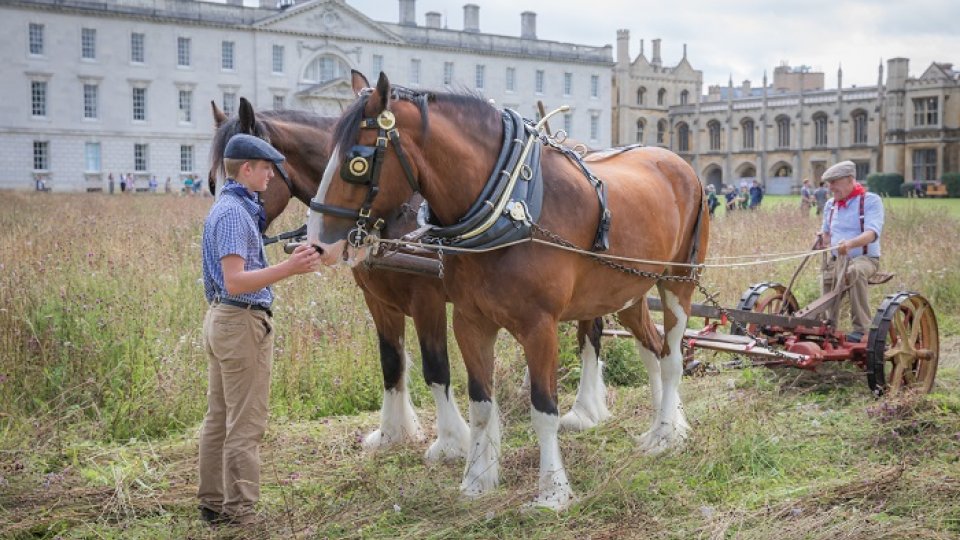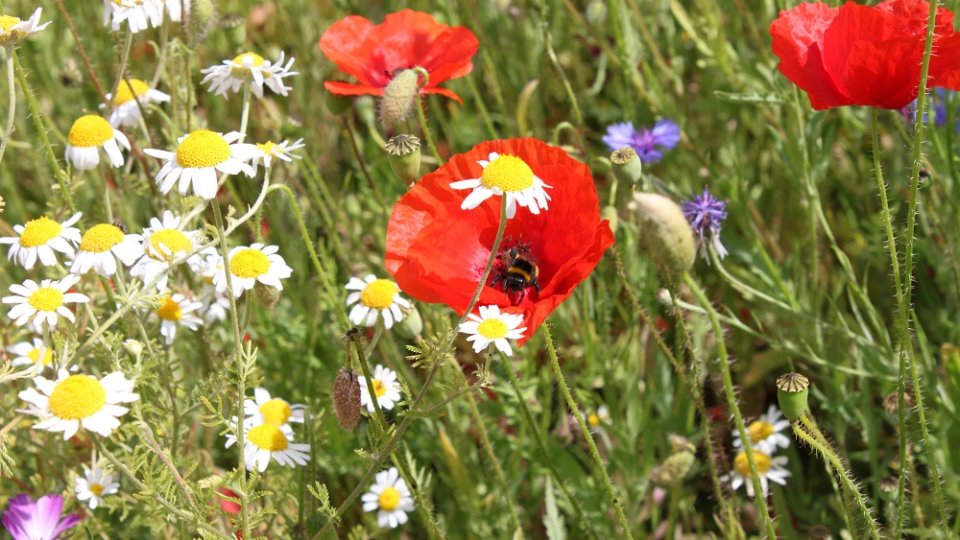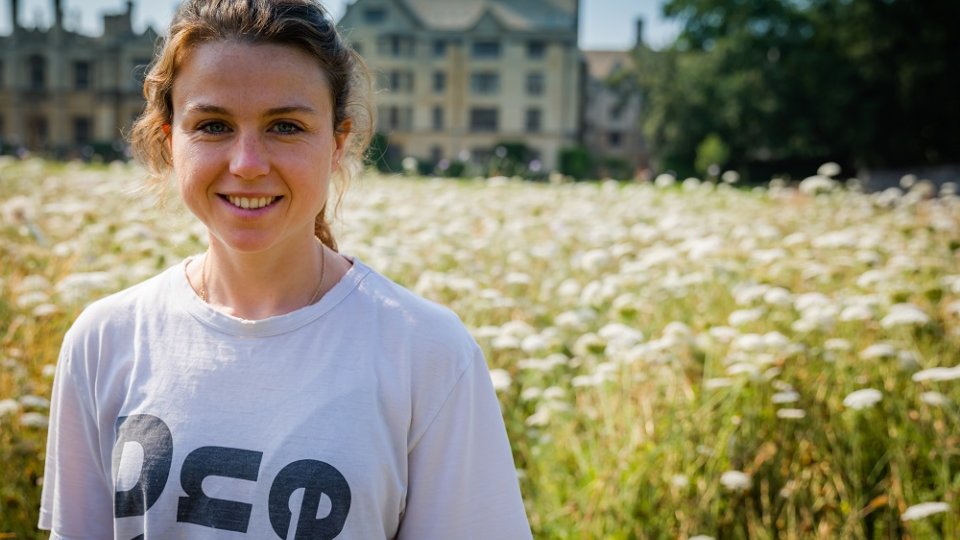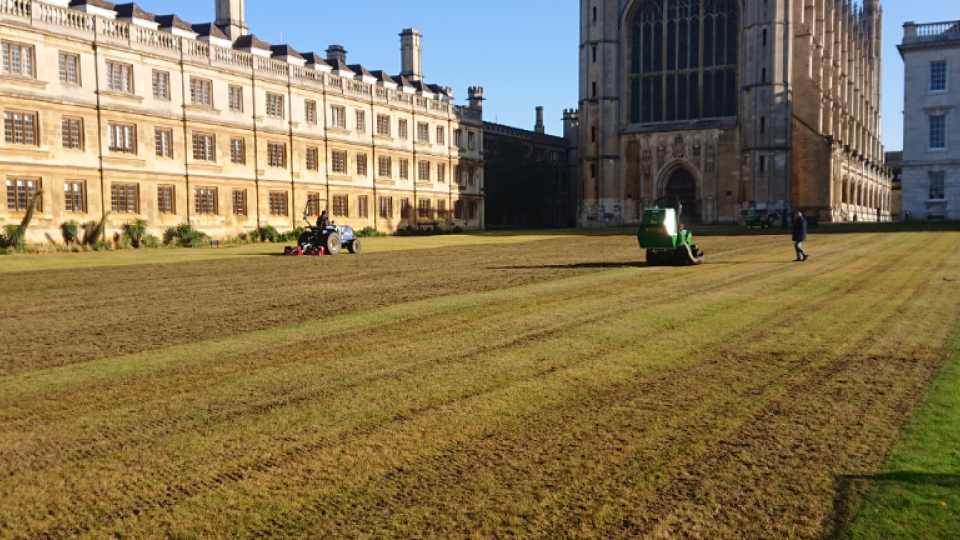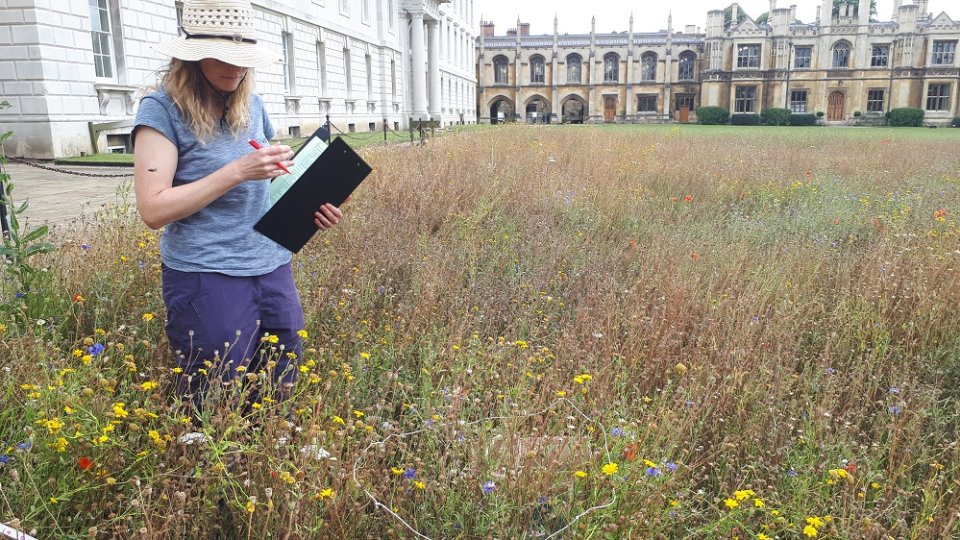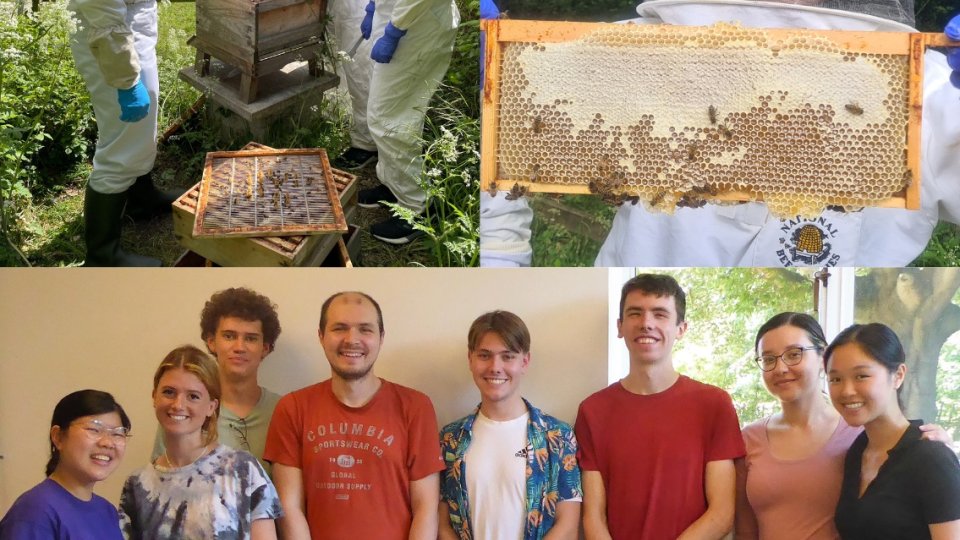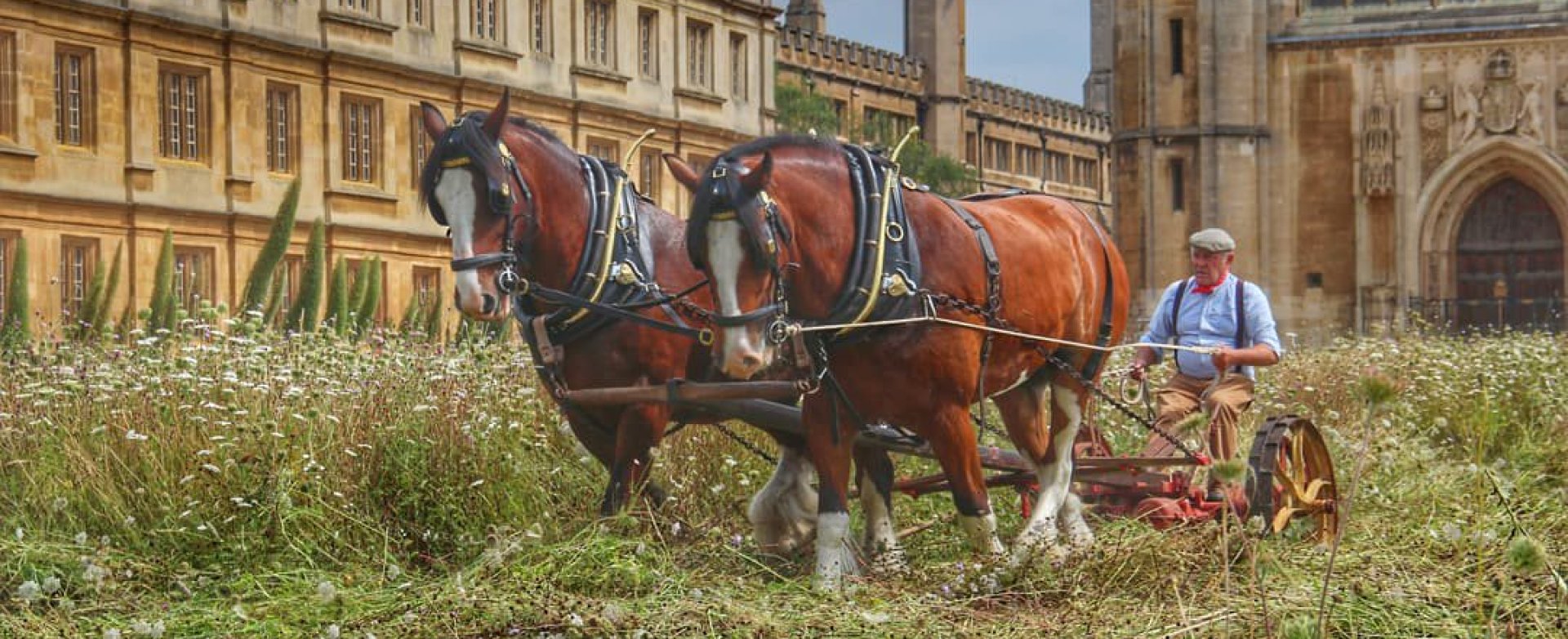
The wildflower meadow at King’s is being harvested this year with the aid of two Shire horses. The horses, Cosmo and Boy, cut the meadow on Monday 2nd August before they return to turn and cart the hay on a traditional wain later in the week, with the bales being used to create more wildflower meadows across the city of Cambridge.
From a biodiversity perspective, this traditional method of harvesting affords the animals within the meadow time to leave the area, whilst the mowing is an important long-term process to keep fertility low and create space for the wildflowers to regenerate.
The involvement of the Shire horses is thanks to an initiative involving the head gardeners of Christ’s College and Murray Edwards College. The resultant bales will be offered to other gardeners around the city and within the University, encouraging others to follow suit and similarly turn their lawns into wildflower meadows.
Head Gardener Steven Coghill said:
We’re absolutely thrilled to be bringing in these magnificent heavy horses to harvest the wildflower meadow. Not only do they have a far lower carbon footprint than using a rotary mower, the sight of these wonderful creatures at work in the College should make for a remarkable, bucolic scene and bring a bit of Constable to Cambridge.
After three years of preparation, the wildflower meadow at King’s is coming to the end of its second year of flowering. Its first year bore witness to a stunning display of annual flowers such as poppies, cornflowers and corn chamomiles, with its second year seeing the germination of perennial plans such as kidney vetch and yellow rattle, as part of its transition towards a traditional East Anglian hay meadow.
A biodiversity monitoring study is being led by King's Research Fellow Cicely Marshall, tracking the ecological changes as the site transitions from 18th century lawn to meadow. The meadow supports three times more plant species than the lawn, including nationally scarce species like wild candytuft, and species like cornflower whose native populations have all but disappeared from the UK. The taller and more diverse meadow planting provides food and shelter for 130 insect species identified at the site, with iconic species like the elephant hawk moth and meadow brown butterfly being regular visitors. The meadow also supports larger bodied species and larger populations than the lawn, and this thriving insect population in turn has a positive benefit for animals which feed on the insects, such as bats. Five bat species use the King's grounds, with bats ten times more likely to feed over the meadow than the remaining lawn.
The Provost of King’s, Professor Michael Proctor commented:
The wildflower meadow has inspired us to think more about how we look after and enhance our biodiversity, and has brought to attention just how much has been lost. We hope its presence in this iconic setting will motivate others to think about sustainability and to consider planting their own meadows elsewhere.
